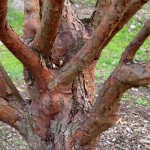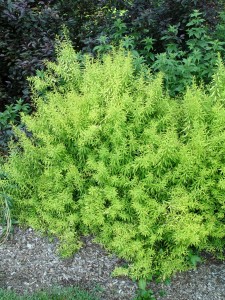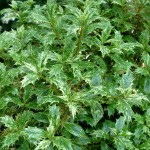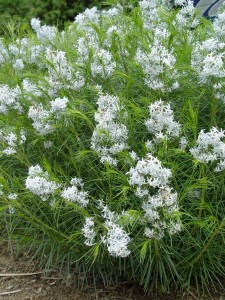Hard-Working Plants
January 3rd, 2012
I told you last week that there really are some super plants out there that meet just about all of the conditions we demand these days (four-season interest, no bugs, no disease, low care, tough in heat and cold, etc.)
So which ones are they? I could rattle off dozens, but for your 2012 plant-buying pleasure, below are 20 at the top of my list (at least for today).
For lots more choices, check out my “George’s Survivor Plant List.” This is a detailed, 18-page listing — organized by plant type — of hundreds of specific varieties that make good choices for central-Pennsylvania landscapes. It includes sizes, light needs, bloom times, flower and leaf colors and other important attributes.
Download a copy for $7.95 or order a paper copy for $12.95 (includes shipping) at this link: https://georgeweigel.net/helpful-info-you-can-buy
For individual baseball-card-like profiles, photos and care tips of most of the hard-workers below, go to this part of my web site: https://georgeweigel.net/plant-of-the-week-profiles
Trees
* Paperbark maple (Acer griseum). If I can have only one tree, this is it. Beautiful cinnamon-colored peeling bark and brilliant red fall foliage on one of the more compact, slow-growing maples. (30 feet tall, 20 feet wide, full sun to light shade.)
* Korean and Japanese stewartias (Stewartia koreana and S. pseudocamellia). OK, you have to give me one of these, too. They’re both sleek slow-growers with white summer flowers, bright multi-color fall foliage and Dalmation-like flaking bark. (20’ x 18’, sun or part shade.)
* American fringetree (Chionanthus virginicus). A small U.S. native that gets unusual white, confetti-like flowers in mid-spring. Yellow fall foliage. Prune to shape in early years. (20’ x 18’, sun or part shade.)
* Persian ironwood (Parrotia persica). Can be grown either as a multi-trunk or a single-trunk tree. Great long-holding neon-gold fall foliage and mottled bark for winter interest. (20 to 30 feet tall and wide, sun or light shade.)
Flowering Shrubs
* Hydrangea ‘Pinky Winky’ or ‘Limelight’ (Hydrangea paniculata). Superb new varieties of tree-type or “PeeGee” hydrangeas. ‘Pinky Winky’ is a bicolor turning white to rosy-pink; ‘Limelight’ is snow white. Both are stiff-stemmed, long-blooming, big-flowered and very tough. (7’ x 6’, sun or part shade.)
* Spirea ‘Mellow Yellow’ (Spirea thunbergii ‘Ogon’). Looks more like some kind of loose, golden willow than a typical ball-shaped spirea. Leaves are narrow and finely textured and turn coppery in fall. Dainty, snow-white flowers in early spring. (5 feet tall and wide, sun to part shade.)
* ‘Knock Out’ shrub roses. Now common but long-blooming and almost impossible to kill. No spraying, drought-tough and can go with no care whatsoever if you don’t mind 6-foot size. Comes in hot cherry-pink, pink, yellow and a coral blend. (4 feet tall and wide, sun and even mostly shade, although they bloom less.)
* Fothergilla (Fothergilla gardenii or major). Slow-growing, trouble-free, under-used native witch-hazel look-alike with early-spring, white, bottle-brush flowers and eye-popping red/gold/orange fall foliage. (5 to 6 feet tall and wide, sun or shade.)
* Super-dwarf butterfly bushes (Buddleia davidii). ‘Lo and Behold Blue Chip’ is the one you’ll most likely find, and it really does stay in the 3- to 4-foot range and bloom for months. Supposedly sterile or nearly so. Others are now coming out, such as ‘Purple Haze’ and ‘Lavender Veil.’ (Sun.)
* More hydrangeas. So many great new hydrangeas. I like the ‘Forever and Ever’ series as best of the classic big-leaf types that also rebloom (especially the deep-blue ‘Blue Heaven’ cultivar). Also check out the new shade-tolerant, huge-flowered cultivars of the native smooth hydrangea, ‘Incrediball’ (white) and ‘Bella Anna’ and ‘Invincibelle Spirit’ (pink). (Afternoon shade to dappled shade all day.)
* Virginia sweetspire ‘Little Henry’ (Itea virginica). Native shrub that gets white, arching, bottle-brush flowers in late spring and vibrant scarlet foliage that holds a long time through late fall. (3’ x 4’, sun or part shade.)
Evergreens
* Dwarf Hinoki cypress ‘Nana Gracilis’ (Chamaecyparis obtusa). It’s hard to go wrong with any in this pest-unlikely, drought-tough family of sleek evergreens, but I like ‘Nana Gracilis’ best for its slow-growing, no-prune, dark-green pyramidal habit. (7’ x 5’, sun or part shade.)
* Weeping Alaska cedar (Chamaecyparis nootkatensis). Beyond graceful. This narrow, upright, soft-needled, medium-green evergreen reminds me of a ballet dancer doing a pirouette. Super as a specimen. (25’ x 10’, sun or part shade.)
* Osmanthus ‘Goshiki’ (Osmanthus heterophyllus). Largely unknown, ‘Goshiki’ looks like a variegated holly, except its new and fall foliage has hints of rose and burgundy. Very slow-growing and no fruits. (6 feet tall and wide, part to full shade.)
* Russian cypress (Microbiota decussata). Ideal as a low, spreading, soft-needled, layered evergreen in shade or part shade. Excellent as a groundcover under trees or on shady banks. (1’ x 6’.)
Perennials
* Japanese forestgrass (Hakonechloa macra). A beautiful, shade-preferring ornamental grass with an arching habit. The golden variegated form is especially nice as a shady bed-edger, and ‘All Gold’ looks particularly nice in late-summer, seed-head form. (18” x 3’, part to full shade.)
* Threadleaf bluestar (Amsonia hubrichitti). Another textural star, this bush-like perennial flower is a durable U.S. native with blue spring flowers, fine green foliage all summer, then burnt golden foliage in fall. (4’ x 3’, sun or light shade.)
* Foamflowers/coralbells/foamybells. Foamflowers are shade perennials with bottle-brush flowers and cross-shaped markings in the leaves. Coralbells are rounded perennials with dainty pink, white or red flowers at the top of wiry stems. Foamybells are what you get when you cross the two. Gobs of great new colorful-leafed varieties of all are now available, and it’s hard to go wrong with most any. (1’-2’ x 2’, shade or part shade.)
* Creeping sedum. These short, drought-tough succulents are evergreen mats with colorful leaves. Yellow or rosy-rust flowers are a bonus. I like ‘Angelina’ for its bright-gold foliage that turns orangish-red in winter and Sedum cauticola for its powdery blue foliage. (6” x you decide, sun or part shade.)
* Barrenwort (Epimedium). One of the best choices for groundcover in the dry shade under trees, these perennials have heart-shaped leaves that are tinged red or rose in spring and fall, plus hanging bell-shaped flowers in spring. (1’ x 2’, shade or part shade.)











